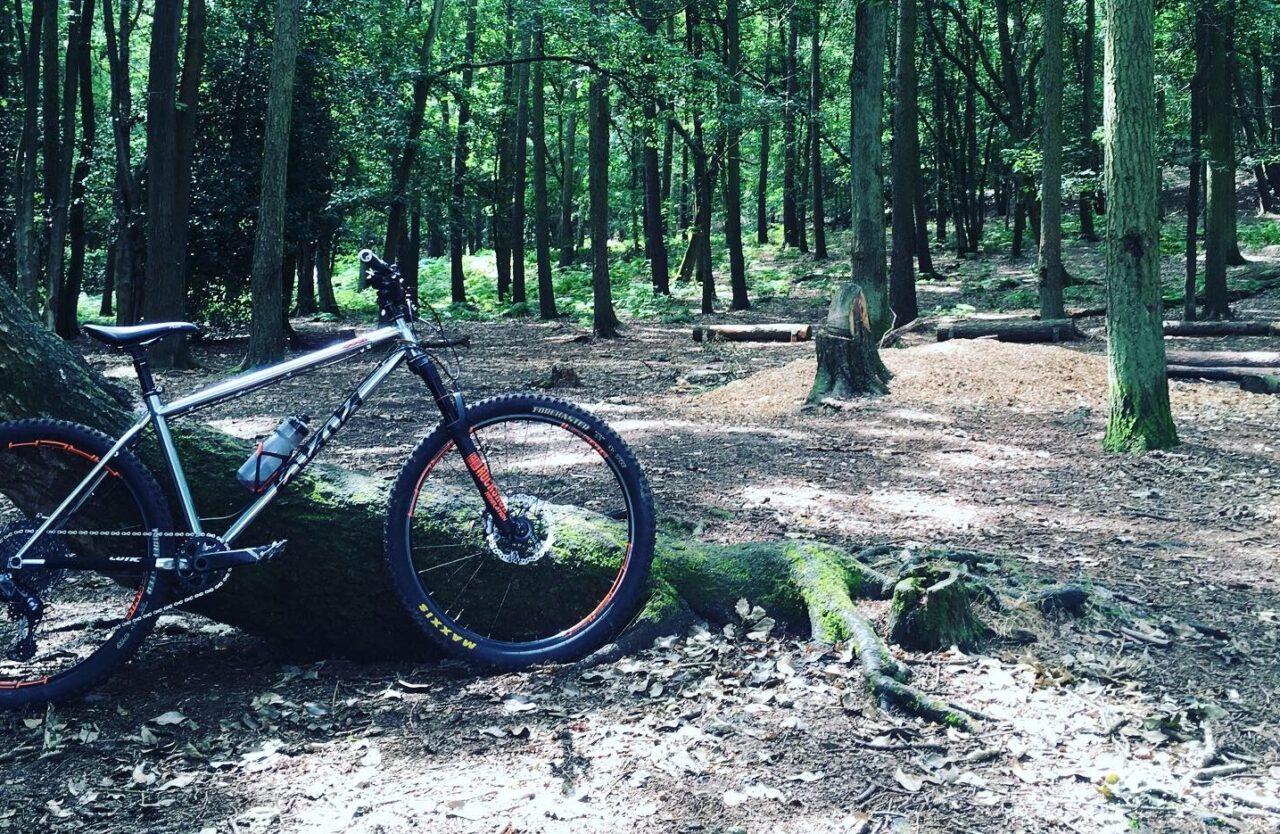

We’re going to skip right to the point here. SRAM’s eagle AXS drivetrain is nuts. It’s brilliant. It’s expensive. Very expensive. But my word is it cool! Review done. Well, not quite. Since it was launched around 18 months ago, SRAM’s Eagle AXS drivetrains have been on everyone’s must try list. For many the cost is an issue, the latest kit is never cheap. Is it truly a gamechanger, or is it a solution to problem that doesn’t really exist? We went through the tech details in our preview post last year, so if you want the full low-down on the specs, give it a read. Here we’re focussed on what it’s like to live with and how it performs out on the trail. We’ve had an X01 Eagle AXS upgrade kit for a few months and put it to the test to find out.
Installation
First things first, we had to fit the upgrade kit to our chosen test bikes. We fitted it to two staff members bikes, Tom’s Cotic Soul steel hardtail and Jack’s Transition Patrol. Fitting really is a doddle. Once you’ve removed your existing derailleur, gear cable and shifter, simply bolt on the new AXS derailleur and controller, re-join the chain and sync them up and you’re pretty much done. A slight fiddle with the limit screws and b-tension as you would with a normal derailleur is needed, but it’s a simple job.

In all it took us less than half an hour, which is impressive. It’s one of the main draws for us over a regular cable-operated drivetrain or even Di2. With no cables to thread through sometimes seemingly impossible internal routing, it has a clear advantage over both, with Di2 in particular being a real nightmare to work on sometimes. If you get your LBS to work on your bike, it’s not something to worry about, but for the mechanic, less time in the workshop means more time on the trails! It also gives the bike a super clean look. With one less cable on the bike and handlebar, the whole bike looks a little sleeker and less cluttered. A small detail, but certainly pretty neat!
Riding
How does Eagle AXS perform out on the trail? It shifts super crisply and cleanly and unlike a cable system, it’s the same quality shift every time. With a regular drivetrain, it’s easy to mis-shift slightly and you don’t realise how much thought you actually put into changing gear. It’s not just a simple press, you have to take into account how far your push and how hard. With AXS it’s just a push of a button, but it still feels tactile, so you know what’s going on.
AXS shifts really well under load too, which was nice when you want to grab that extra gear on a steep climb or need to charge through the gears on descents or singletrack. We wouldn’t say it shifts any quicker than a regular drivetrain, but it’s certainly a tad smoother and way more consistent; with no cables to deteriorate, the shifting was as good after several months as it was when new. The AXS controller uses a rocker paddle, which took some getting used too, but once acclimatised it was easy to live with, though we would prefer a slightly more ergonomic shape. SRAM have recently released a new rocker paddle which should solve this minor gripe, but it’s not available until next year.

The big question mark is how nearly £700 worth of derailleur stands up to the abuse an MTB is put through. We have to admit, we spent our first few rides going a little easier on rutted sections of trail as the thought of ripping off and mangling something so expensive was a terrifying thought. We needn’t have worried though as the AXS derailleur has stood up to some serious abuse and is functionally sound, despite some big hits and light superficial marks. Battery life has been really impressive too; we’ve yet to replace the single CR2032 battery in the controller and have been able to log multiple rides between charging the battery on the derailleur.

There’s no doubt that SRAM’s Eagle AXS drivetrains are expensive and for many people that will stop them buying it or consider buying a bike equipped with it. But from a pure performance point of view, AXS is the way forward in our minds. You’d think adding electronic hardware would further complicate a bike, but in this case, it makes things a little simpler and there is no denying that performance wise, it is a step above a regular, cable-operated drivetrain. SRAM trickled down their original Eagle drivetrains to lower price points very quickly, and we hope they can do the same with AXS, as it would be a huge benefit for many riders who want a fit and forget drivetrain.


